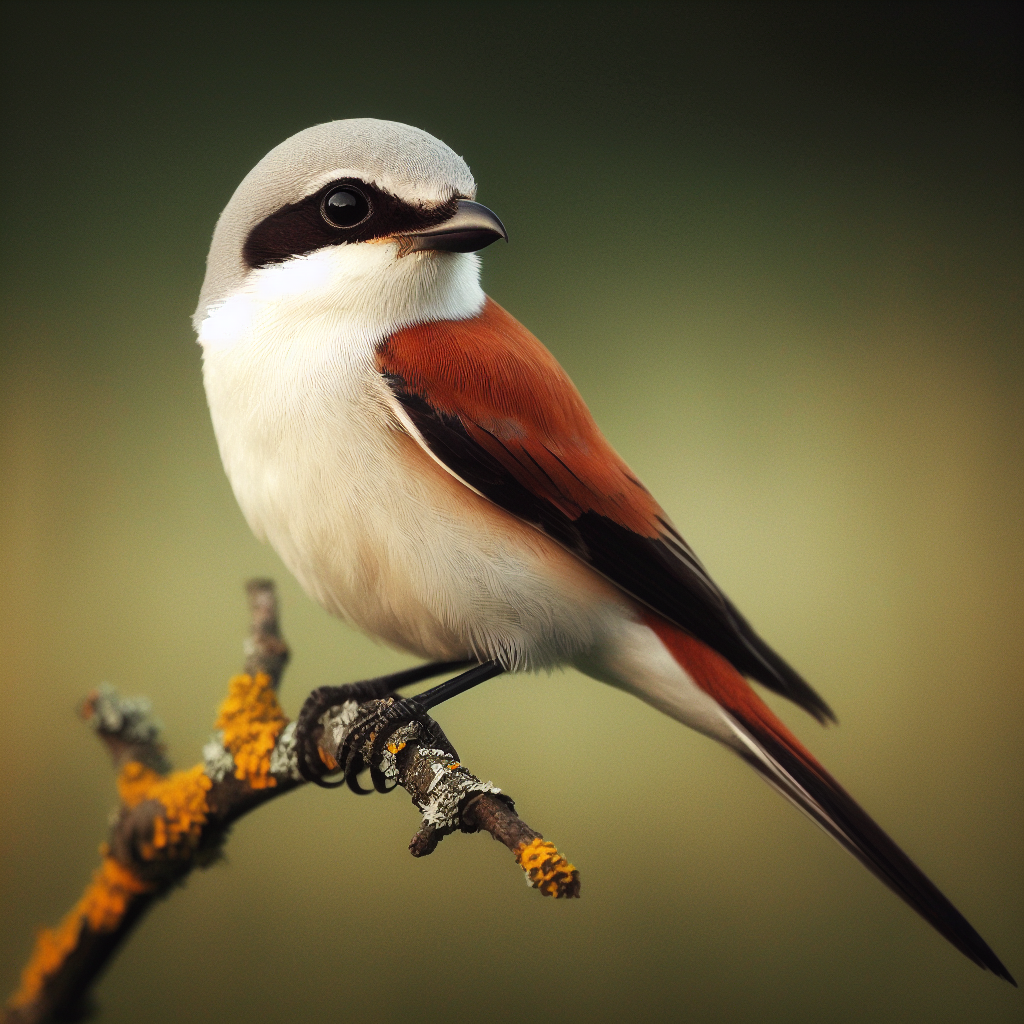Most beautiful small birds - Sykalo Eugen 2024
Red-backed Shrike (Lanius collurio)
Identification:
- Species name: Red-backed Shrike
- Scientific name: Lanius collurio
- Family: Laniidae (Shrikes)
- Order: Passeriformes (Songbirds)
- Subclass: Neornithes (Modern birds)
- Class: Aves (Birds)
Description:
- Size: Medium-sized songbird, about 16-18 cm (6.3-7.1 in) long with a wingspan of 29-32 cm (11.4-12.6 in).
- Body shape: Slim and elegant, with a long, sharp beak, a long tail, and prominent hooked tip.
- Plumage color:
Males: Bright chestnut back, contrasting with their pale gray head and black mask through the eye. Underparts are pale buff or pinkish.
Females: Similar to males but duller overall, with less defined chestnut back and black mask.
Long, hooked beak, black and powerful.
Strong, pinkish-gray legs.
Dark brown eyes.
Behavior:
- Method of feeding: Hunts from prominent perches, catching insects in mid-air or gleaning them from vegetation. May also impale prey on thorns or barbed wire as a "larder" for later consumption.
- Reproduction: Builds cup-shaped nests in low bushes or trees. Lays 5-7 pale blue eggs with dark speckles. Both parents care for the young.
- Movement: Migratory, breeding in Europe and western Asia and wintering in Africa.
- Communication: Loud, clear song, often described as a series of whistles and warbles. Also uses a variety of calls for alarm and communication.
Ecology:
- Habitat: Open areas with scattered bushes and trees, such as heathland, orchards, and farmland. Prefers areas with thorny plants for impaling prey.
- Diet: Large insects, small birds, lizards, rodents, and frogs.
- Hunting methods: Perches and scans for prey, then dives or sallies out to catch them with remarkable agility. May also glean insects from leaves and branches or impale them on thorns for later consumption.
Distribution: Widespread in Europe and western Asia, breeding from Spain to Russia and wintering in Africa from the Sahel to South Africa.

Murderer, Butcher, or Just a Smart Hunter? While the nickname "butcher bird" paints a gruesome picture, their impaling habit (spiking prey on thorns or barbed wire) serves a practical purpose. Not only does it secure larger prey for later consumption, but it also attracts insects drawn to the scent of fresh meat, creating a feathered lure for additional snacks. Think of them as avian larder keepers with built-in miniature meat hooks and an opportunistic menu.
Masters of Mimicry and Deception: Beyond their own repertoire of whistles and screeches, Red-backed Shrikes have mastered the art of mimicking calls of other birds, from warblers to finches. This trickery serves multiple purposes: confusing prey, attracting mates, and even intimidating rivals. Imagine them as feathered ventriloquists with built-in miniature soundboards and a talent for avian espionage.
Unexpected Family Planners: These fierce hunters exhibit surprising tenderness when it comes to raising their young. Both parents diligently share childcare duties, from building the nest to feeding the chicks. Males even offer their mates "gifts" of impaled prey, a charming serenade in the language of butchered beetles. Talk about feathered Romeos with built-in miniature skewers and a knack for romantic gestures.
Cultural Connections: Across Europe and Asia, the Red-backed Shrike has held diverse cultural significance. In some regions, it's seen as a symbol of bad luck, its impaling habit interpreted as a sign of aggression. In others, it's revered for its pest-control skills and perceived bravery, earning it titles like "bird of a thousand eyes" and "guardian of the fields."
Unexpected Regional Variations: Did you know the Red-backed Shrike isn't just one uniform bird? Different populations across its vast range show subtle variations in plumage color, size, and even hunting techniques. It's like finding a feathered chameleon with regional dialects and diverse culinary preferences.